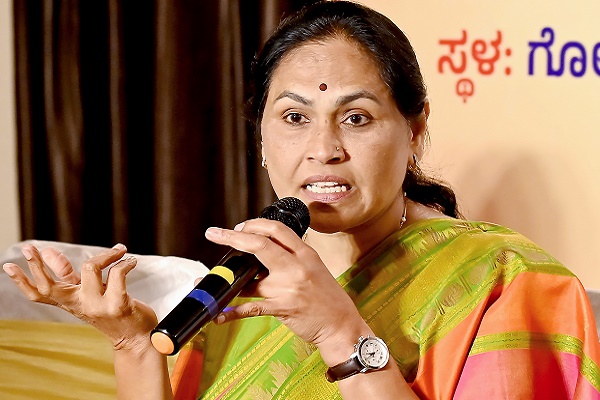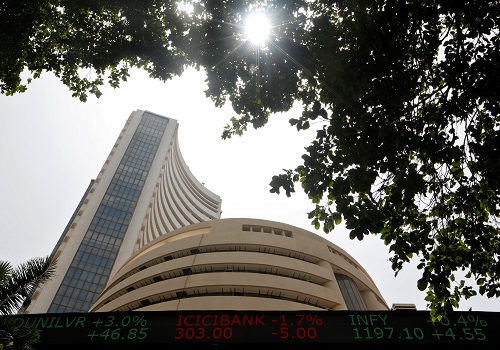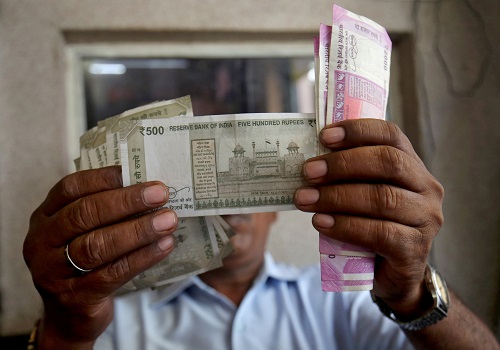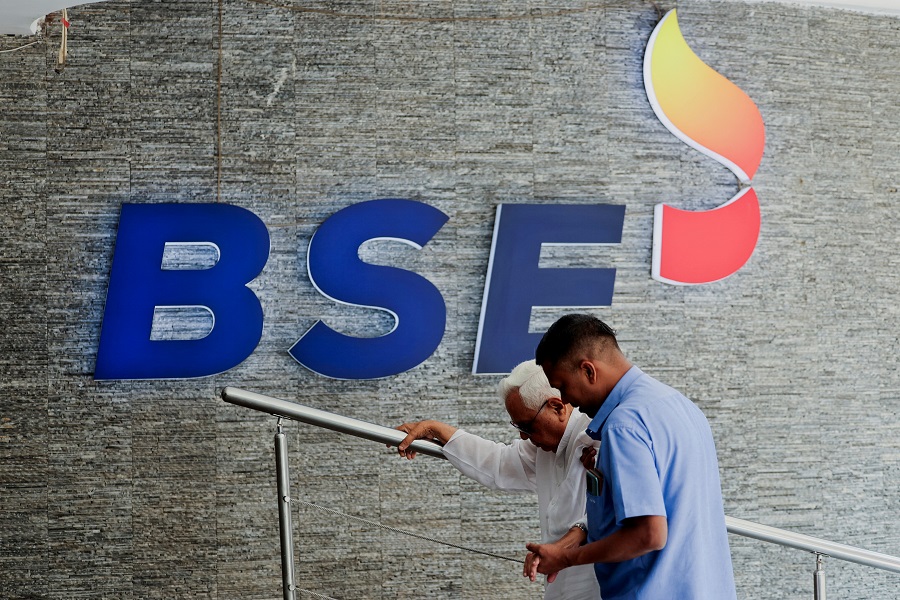Retail Sector Update - Grocery Retail - Changing landscape By Motilal Oswal

Grocery Retail - Changing landscape
Competition in the Online Grocery space coming to the forefront
Unlike most other Retail categories, Grocery has remained largely insulated from the Online disruption. However, the prominence of Online players and their growing scale in the last few years makes us sit up and take notice. In this report, we discuss the growing scale of Online players, market opportunity, challenges, evolving business models, and the competitive position of offline retailers.
e-Grocers turn sizeable, no more minnows
Historically, e-Grocery hardly garnered single-digit share of the overall grocery market in India and globally, with multiple players trying to make inroads with limited success. In the last few years, the growth of e-Grocery players have certainly made us sit up and take notice. While penetration remains low, the online grocery market has grown 30x in the last 7-8 years to reach USD3b. Viewed differently, it is cumulatively the third largest Modern Retail player in the market behind DMart and Reliance Retail. This space is now expected to grow over 59% CAGR to USD18b by CY24E.
India has 154m online transacting households in CY20, with 130m already using e-Grocery platforms or willing to try, creating an addressable market of a whopping USD293b. Of this, ~55% of the addressable market lies beyond Tier II cities, so e-Grocers will increasingly move to smaller towns, a region that has low coverage so far. COVID-19 led lockdown has certainly helped e-Grocers, with CY20 monthly exit run-rate almost 2x that of Jan’20 GMV and largely sustaining the surge seen during the lockdown as evident from our app visit analytics. Over this period, Big Basket/Grofers witnessed a 4x/3x surge in daily orders, with a steady rise in AOVs.
Value v/s convenience buyer – a key driver of profitability
In India, a large (65%) quantum of the e-Grocery addressable households are price sensitive (low gross margin) value first customers (average income of 0.3-0.6m p.a), prioritizing discounts over limited variety, longer waiting time, or an inconvenient experience.
This is against the higher margin convenience first customers (average income of 1.2-1.4m), who prioritize a shopping experience and prefer purchasing from a wider product assortment/availability in one place and lesser crowds/waiting time. Unit economics of value first customers appear promising with key determinants of profitability like bulk purchases, higher private labels, low delivery cost, and customer stickiness. e-Grocers increasingly target them to drive profitability as in the case with modern retailers.
Logistic cost and inventory management remain a key hurdle; needs a differentiated approach to tackle
The Grocery market has been historically dogged down by wafer thin (15-20%) gross margins, higher (20-25%) logistics cost, and complex inventory management, making it difficult to achieve sustainable profits and compete with the traditional retail/distribution channel, which operates on 15% cumulative margin in the value chain. But the path to scale and profitability, with multiple levers and a stronger balance sheet, is now becoming clearer for e-Grocers.
These players have started targeting bulk purchase to leverage cost, limit assortment (thus aiding inventory control), pushing margin accretive private labels, saving acquisition cost due to customer stickiness, and charging delivery cost below a threshold of AOV (average order value), thus creating a favorable equation of higher gross margins and reducing cost/order. Our channel checks suggest Big Basket and Grofers have taken a more rational approach, pushing 30-40% private labels in the overall mix, higher AOV, and limiting discounts, which has led to the recent improvement in profitability.
The one-year old JioMart has kept delivery free without any minimum AOV threshold, while Flipkart/Amazon has targeted a wider network of cities to push revenue growth. In terms of price competitiveness, JioMart is the lowest price player, followed by DMart Ready. Our app visit analytics suggest that JioMart/Big Basket/Grofers enjoys higher app visits, while Dunzo/JioMart enjoys the lowest bounce rate, implying more page visits.
Multiple players with varied models taking a shot
Multiple platforms are disrupting the grocery space with innovative models. These are: a) e-Grocery specialists, along with early morning meat and dairy specialists that enjoy higher customer recall, b) market place players leveraging deep customer analytics and offering quick deliveries to a wide network of locations, and c) offline retailers who have started venturing into omnichannel offerings in select locations.
These retailers operate through differentiated models to achieve scale and profitability: a) inventory model, which allows them to control the quality and price, but has higher logistics cost, b) hyperlocal model, which is increasingly seeing higher acceptance by many e-grocers, with back-end inventory control to address faster turnaround and logistics cost, and c) hybrid model that leverages their own stores to provide a smoother last-mile delivery. With increasing scale, we see a foolproof integrated approach, which will enhance profitability.
Brick and mortar stores have a cost advantage, but consumer convenience will soon compel them
The fear of online grocery retailers is turning real as a majority of e-Grocery growth has predominantly come from regions, which is the key market of modern retailers. Offline retailers presently hold an edge due to varied factors like DMart’s ownership model and cost competency. Rent though 5-7% of sales, makes up nearly one-third of gross margin. Despite the high capital intensive model, it creates a strong cost competency, which drives productivity and scale.
Similarly, Reliance Retail’s edge lies in its deep store network, its evolving hyperlocal model, and backward integrated B2B Grocery model, which, when combined, could certainly provide a logistics edge. However, our case study explains on e-Grocers explains higher private labels, lower customer acquisition, supply chain and marketing cost has enabled them to turn profitable. As the customer is gradually being habituated to online grocery shopping, it is imperative to build an omnichannel network to ensure business continues to meet customer requirements.
Valuation and view
DMart
We expect DMart to deliver FY20-23E revenue/EBITDA CAGR of 23%/21%, factoring in -5%/50% SSSG (two-year SSG over the low base of FY21) and 30/40 store additions in FY22E/FY23E. Its continued cost/price competitiveness should hold the company in good stead. However, a) growing scale of Online retailers, and b) potential moderation in growth and return profile may restrict a re-rating. We value DMart at a 20% discount to its three-year average EV/EBITDA multiple of 58x on a FY23E basis, valuing it at INR2,850, implying a 8% downside. Retain Neutral.
Reliance Retail Ventures (RRVL)
RRVL has maintained its strong performance in the last five years. The recent fund raise of INR377b would further strengthen its physical and online presence.
We expect 19% revenue/EBITDA CAGR each over FY20-23E to touch INR2.2t/INR166b by FY23E. We value the company on a SoTP basis, valuing its core business at 31x FY23E EV/EBITDA and connectivity business at 4x FY23E EV/EBITDA to arrive at our TP of INR745, implying INR670 (for its 90% stake). Our premium valuation multiple captures the opportunity for rapid expansion in its Retail business and the aggressive rollout of the JioMart platform.
To Read Complete Report & Disclaimer Click Here
For More Motilal Oswal Securities Ltd Disclaimer http://www.motilaloswal.com/MOSLdisclaimer/disclaimer.html SEBI Registration number is INH000000412
Above views are of the author and not of the website kindly read disclaimer










Tag News
More News

Realty & Hotel Sector Weekly Market Insights 08th September 2025 by Ashika Institutional









